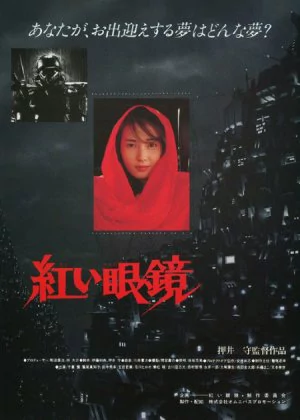The Red Spectacles
Mamoru Oshii started off his career as a live-action director with The Red Spectacles [Jigoku no Banken: Akai Megane]. Right after finishing work on Angel's Egg he vowed to bring the Kerberos universe to life, and so he threw himself on this film. The result is a mad and weird experiment unlike anything you've ever seen. A perfect mix of Oshii's conflicting sides and a film that still feels as unique as the day it was released.
![screen capture of The Red Spectacles [Jigoku no Banken: Akai Megane]](/thumbs/img/articles/1200xauto/akai-megane-1.webp)
Fans of Oshii will have a field day with The Red Spectacles. Not only can you recognize Oshii's early live-action heroes (there a little Stalker and Alphaville in here), there are also a couple of fun references to Oshii's own work. The Angel's Egg reference is an obvious one, the film's visual style is highly reminiscent of Avalon and real die-hards will undoubtedly catch the preliminary signs of what would later turn into The Amazing Lives of the Fast Food Grifters. There are smaller trademark signs too, which are sure to bring a smile to the man's fan base.
If you're familiar with the Kerberos universe (Jin-Ro), prepare yourself for a hearty surprise. Even though the film starts off normal enough (a 10-minute intro in color), once Oshii switches to faded sepia footage things get pretty weird. Oshii alternates between moody, stilted and atmospheric arthouse and crazy, unapologetic slapstick. The transitions between these two aspects are sharp and brisk, hardly announced, and they're sure to upset quite a lot of people. Then again, they also define and set this film apart from all the rest.
The intro of The Red Spectacles shows the disbandment of the Kerberos Police Force. A troupe of faithful agents tries to flee the city, but Koichi is the only one to remain out of the grasp of the authorities. A few years later he returns to visit his old friends, but he quickly learns that a lot has changed since the time he left the city. Even though he manages to locate most of his old buddies, they seem quite reluctant to welcome Koichi back and once again he finds himself fleeing to save his hide.
![screen capture of The Red Spectacles [Jigoku no Banken: Akai Megane]](/thumbs/img/articles/1200xauto/akai-megane-2.webp)
Visually The Red Spectacles is a real beauty. The full color intro is maybe a little bland in comparison, but once Oshii switches to the faded sepia look you quickly start to notice the perks of his animation background. Superb camera work, perfectly timed editing and strong colorization make this film a real visual stand-out. That and some very amusing special effects. They are far from state of the art, but their abstract presence help to further increase the weirdness levels.
The soundtrack is of course handled by Kenji Kawai, which results in a selection of very typical and unique theme tracks. All in all it's a very strong soundtrack, a very recognizable Kawai and Oshii collaboration that flows very well with the existing atmosphere. It's not Kawai's best, for that it lacks the power to truly add to the vibe coming from the visuals, but compared to scores in general this one is nothing to be ashamed about.
It's not that easy to judge the abilities of the actors, as they were asked to switch between deadpan serious and over-the-top slapstick in mere seconds, but they all do a pretty commendable job. Shigeru Chiba (looking at times like Delon in Le Samourai) is a very strong and enigmatic lead, as for the secondary roles Machiko Washio is definitely the one that draws the most attention. A rather stern and serious-looking woman, though displaying surprising comedy potential. The style of acting won't be to everyone's liking, but it's clearly crucial to Oshii's overarching master plan.
![screen capture of The Red Spectacles [Jigoku no Banken: Akai Megane]](/thumbs/img/articles/1200xauto/akai-megane-3.webp)
The Red Spectacles is not a very obvious film. People expecting a clear comedy or a brooding arthouse film will be disgusted by the many shifts in tone, pacing and atmosphere. Even people appreciating these both aspects in one single film may find the transitions too brisk and disruptive. It creates some serious pacing issues that are sure to put people off. On the other hand, it makes this film like no other out there, so if you think you can handle Oshii's particularities you're in for a pretty unique treat.
A peculiar mix of slapstick, surreal comedy and meditative arthouse, with plenty of Oshii quirks, superb visuals and a strong soundtrack to make it one of the most unique projects of the 80s. Finding the film proved impossible until Bandai put the film out on DVD a few years ago, so there's really nothing holding you back to seek this one out. Take it as it comes and you might be surprised by the sheer entertainment value of this one.
